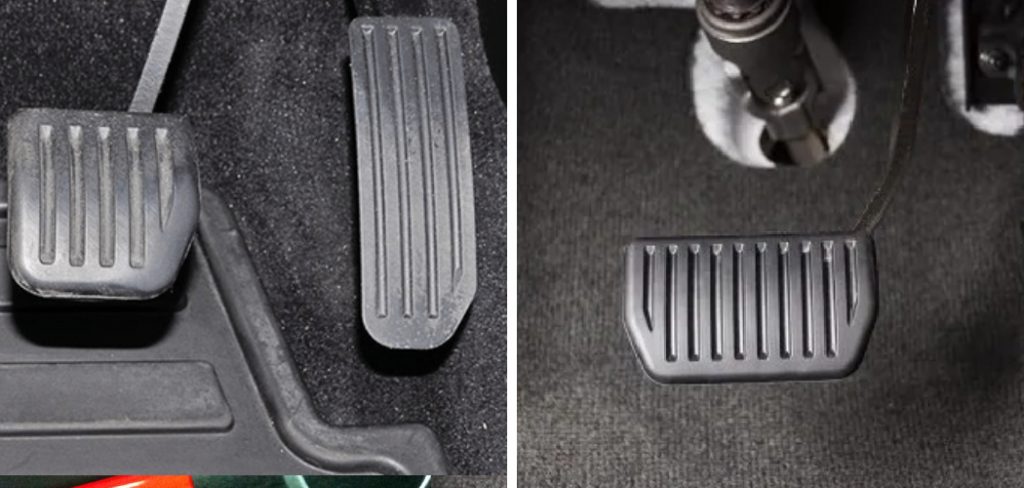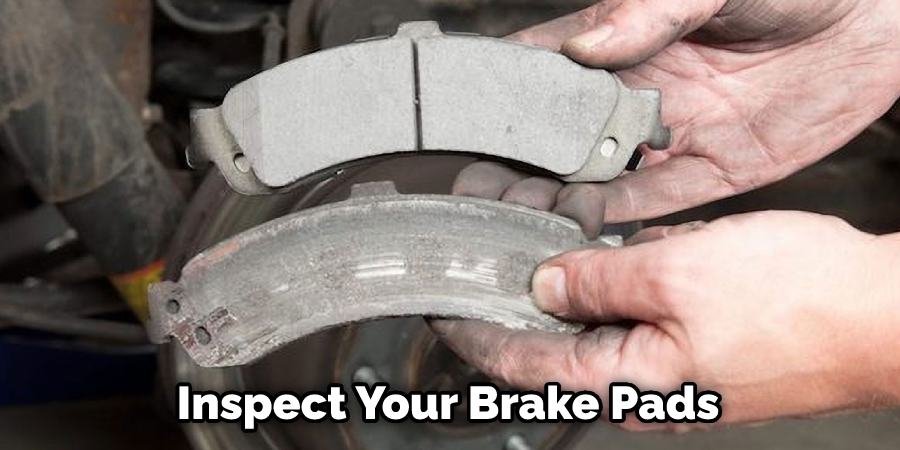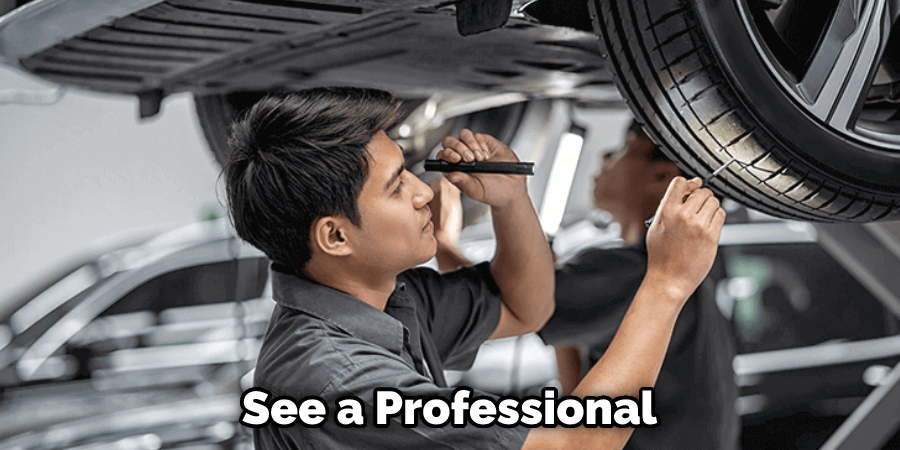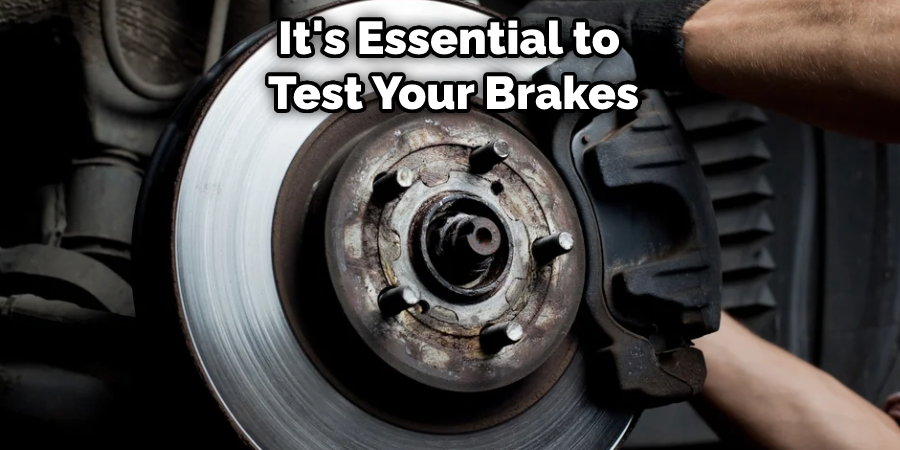Are you dealing with a hard brake pedal that feels almost too stiff to press? You’re not alone; this is something many car owners have had to deal with at one point or another. It can be really frustrating, especially if you don’t know exactly how to fix the problem.

Luckily, there’s no need for despair. Fixing a hard brake pedal doesn’t have to be intimidating – and these tips on how to fix a hard brake pedal will explain it all in an easy-to-understand way! From identifying the source of the issue, best practices for replacing worn parts, and even common repair mistakes to avoid – we’ve got you covered so that your brakes are back up and running in no time.
Why Does It Happen?
There are a few common causes of a hard brake pedal – and luckily, most of them can be fixed easily. The first thing you should do is to identify the source of the problem in order to determine what kind of repair is necessary.
1. Low Brake Fluid Level
This is one of the most common reasons why your brake pedal might be hard. If you notice that the brake fluid level is low, it’s an easy fix – just top off the reservoir with fresh brake fluid, and your brakes should be back up and running in no time. Because brake fluid is hygroscopic (meaning it absorbs moisture), old or low-level brake fluid can cause corrosion in the system, leading to a hard brake pedal.

2. Worn Brake Pads
If there is enough brake fluid, but your pedal still feels too stiff, it could be a sign that your brake pads are worn. This means it’s time to replace them – and in order to do so, you’ll need to locate the brake calipers and remove the old pads.
3. Air In The Lines
If there don’t seem to be any issues with the brake fluid or brake pads, then it could be due to air in the lines. Bleeding the brakes is usually required to get rid of any trapped air or bubbles, which can cause a stiff brake pedal.
10 Steps on How to Fix a Hard Brake Pedal
Step 1: Check the Brake Fluid Level
The first step in fixing a hard brake pedal is to check the level of brake fluid. Open the reservoir and make sure that there’s enough fluid. If it’s low, top it off with fresh brake fluid.
Step 2: Inspect Your Brake Pads
Once you’ve checked the brake fluid level, you should inspect your brake pads for any signs of wear and tear. If there’s visible damage or wear, it’s time to replace them. So locate the brake calipers and remove the old pads.

Step 3: Clean and Lubricate All Components
If your brake pads are still in good condition, you should clean and lubricate all components before moving on to bleeding the brakes. This will help ensure that no dirt or debris gets into the system while you’re working on it. Again, locate the brake calipers and use a clean, dry cloth to wipe away any dust or grime.
Step 4: Bleed The Brakes
Once all components are clean and lubricated, it’s time to bleed the brakes. This will remove any trapped air or bubbles in the system that can cause a hard brake pedal. To do this, you’ll need a brake bleeder kit, which can be purchased at any auto parts store.
Step 5: Adjust The Brake Pedal Pressure
After bleeding the brakes, you may need to adjust the brake pedal pressure in order for it to feel normal again. This can be done by adjusting the pushrod and proportioning valve.
Step 6: Check for Leaks
Once adjustments have been made, you should check for leaks. Make sure all brake lines and connections are secure and not leaking any fluid. This can be done by checking the brakes while the car is running to see if there are any drips or puddles forming underneath.
Step 7: Test the Brakes
Now that all repairs are complete, it’s time to test the brakes. Start by driving slowly and checking for any signs of a hard brake pedal, such as vibration or noise. If everything is working correctly, gradually increase your speed until you’re confident that your brakes are performing properly.
Step 8: Check For Worn Parts
Although you may have fixed the hard brake pedal, it’s important to check for any other worn or damaged parts. This includes inspecting the brake calipers, rotors, and drums for any signs of wear. If necessary, replace any components that have reached the end of their life.
Step 9: Monitor Your Brakes
Finally, it’s important to keep an eye on your brakes and make sure they stay in proper working order. Monitor the brake fluid level at least once a month and check for any signs of wear or corrosion.
Step 10: See Your Mechanic
If you’re still having issues with your brakes after following these steps, it’s best to see a professional mechanic for further advice and assistance. They will be able to diagnose any problems more accurately and provide you with the best solution for your car.

By following these steps, you can effectively fix a hard brake pedal and ensure that your brakes are in proper working order.
8 Maintenance Tips to Fix a Hard Brake Pedal
1. Check the Brake Fluid Level
Make sure to check your brake fluid level on a regular basis and top it off when necessary. Because brake fluid absorbs moisture, it can get contaminated over time and cause a hard brake pedal.
2. Inspect the Brake Pads
Brake pads are one of the most important parts of your braking system – so inspect them regularly for wear and tear, as well as any damage or corrosion. If you notice that they’re starting to wear down, replace them right away.
3. Bleed the Brakes
Bleeding the brakes is a relatively easy process that involves removing excess air from the system. If you notice any air bubbles in the brake fluid when checking it, you should bleed your brakes to get rid of them.
4. Replace Damaged Parts
If any of the parts in your braking system are damaged, you should replace them right away. This includes things like brake calipers, rotors, hoses, lines, and other components.
5. Look for Leaks
Look around the brakes for any signs of leaking fluid. If you see wet spots on the floor or puddles of fluid under your vehicle, you should take your car to a mechanic as soon as possible.
6. Use High-Quality Brake Fluid
Make sure to purchase high-quality brake fluid for topping off the reservoir. This will help ensure that your brakes are running optimally and won’t become contaminated over time. Make sure to check the manufacturer’s specifications for recommended fluid types.
7. Get Professional Help
If you’re still having trouble with a hard brake pedal, it may be time to take your car to a professional mechanic. They’ll be able to inspect and diagnose the issue – and if necessary, make any repairs or replacements.
8. Test The Brakes
Once you’ve fixed the problem, it’s essential to test your brakes before getting back on the road. This will help make sure that everything is in working order and that your pedal is not too hard or soft.

Frequently Asked Questions
How Often Should I Check My Brakes?
You should check your brakes every few months to make sure that they are in good condition and not showing any signs of wear and tear. You should also have them inspected by a professional mechanic at least once a year.
How Can I Prevent Future Brake Problems?
The best way to prevent future brake problems is to make sure that you keep up with regular maintenance, such as changing the brake fluid and inspecting all components. Additionally, it’s important to replace worn brake pads in a timely manner in order to minimize wear and tear on other parts of your braking system.
How Do I Know What Type of Brakes Are Right for My Car?
Different cars require different types of brakes, and it’s important to make sure that you choose the right ones. If you’re unsure, it’s best to consult a professional mechanic who can recommend the proper brakes for your vehicle.
Conclusion
In conclusion, a hard brake pedal can be quite frightening and may be an indication of bigger problems. Thankfully, many issues that could cause a hard brake pedal can easily be prevented or fixed with some simple maintenance tips on how to fix a hard brake pedal. Be sure to check and adjust the brakes periodically, replace any worn parts, and monitor fluid levels.
Also, take the time to have your brakes checked by a professional every so often; they have the tools and know-how to more accurately assess any existing issues without you having to do the labor yourself.
Taking care of your vehicle is vital for ensuring it runs safely and efficiently, so don’t wait too long if your brake pedal ever starts to become too hard and unresponsive. A bit of extra monitoring in this area will help save you from any potential nightmares down the line.
